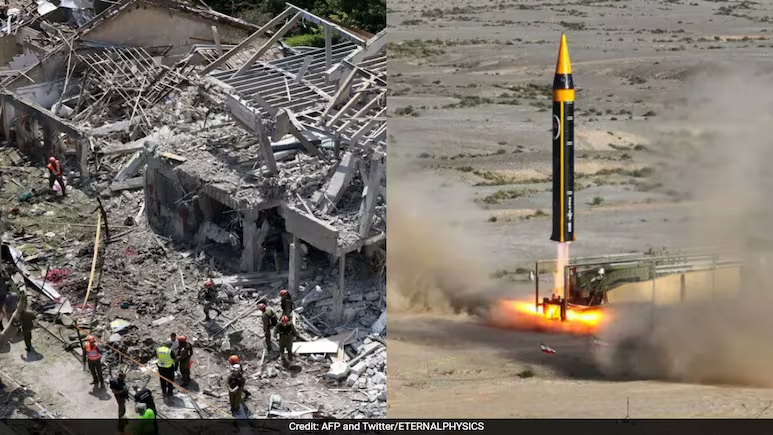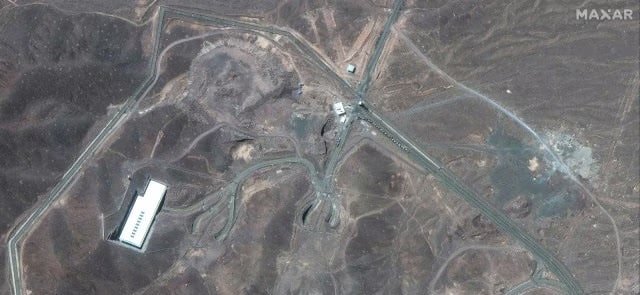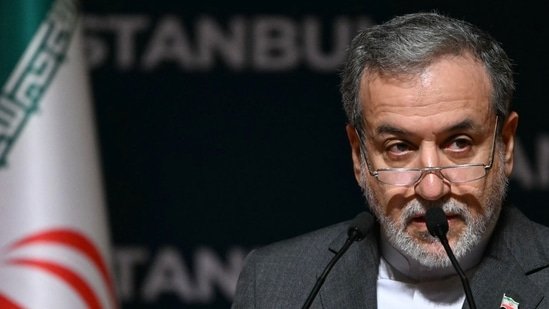In a dramatic turn of events, Iran’s deployment of its Khorramshahr-4 missile marks a pivotal moment in the escalating tensions across the Middle East. This powerful weapon, launched in retaliation for U.S. strikes on Iranian nuclear sites, has raised new concerns over civilian safety, regional warfare, and the limits of diplomacy in preventing further destruction.
Missile, Built for Power – A Timed Missile
Hours after U.S. bomber jets attacked three key nuclear facilities – which US officials believe support Iran’s nuclear ambitions – Iran responded by firing at least 40 missiles. They included the Khorramshahr-4 missile which was broadcast on Iranian state television and also confirmed by the country’s paramilitary Revolutionary Guard, according to the statement.
- The missile is Iran’s most powerful with regard to payload.
- It is said to have a range of 2,000 kilometers.
- Can be fitted with a warhead weighing 1,500 kilograms.
- Three Iranian officials told Reuters last week that the missile is capable of carrying multiple warheads.
- Iran has not released live footage of the missile’s launch.
- Footage shared with state media appeared to be archive footage.
The Symbolism of Khorramshahr and Kheibar
It is a naming convention that Iran has sometimes used for military hardware with historical or symbolic meaning. The missile Khorramshahr-4 is named after the Iranian city of Khorramshahr which was heavily shelled during the eight-year Iran-Iraq war when Saddam Hussein launched an offensive with the city as the second objective. The missile is also called Kheibar, after a Jewish fort captured during the seventh century and located in what is now Saudi Arabia.
The duality represents both nationalistic pride over the country’s history and a nod to religious references, and it serves as a reminder of how Iran’s military posture is inseparable from its political, social and historical narratives.
The U.S. Strikes That Came Before Iran’s Response
The missiles fired by Iran in response to the assassination of General Qassim Suleimani came after the United States dropped bombs to level three of Iran’s core nuclear facilities: Fordow, Natanz and Esfahan. These are widely thought to be working to support Tehran’s uranium enrichment and nuclear fuel processing operations. The US strikes were considered a reaction not just to the rising tensions in the area, but also to discourage Iran from continuing to innovate in its alleged efforts to weaponize its nuclear program.
President Donald Trump issued a terse warning to Iran – there would be further consequences if it did not de-escalate. He added that the United States was ready to strike again with “precision, speed, and skill” if required.
The Aftermath in Israel: Civilian Areas Targeted
In response, Iran’s missile barrage struck multiple sites inside Israel. Among the most intense incidents was a direct hit in the northern Tel Aviv civilian area. Among the locations struck were a shopping mall, a bank and a beauty salon. Footage showed that the destruction was widespread, with broken glass scattered on the streets, shopfronts damaged and security forces to seal off the area, according to reports from NDTV journalists on the ground.
One resident described how the explosion leveled his first-floor house. Fortunately he had also slept at his mother’s house the night before, managing to avoid any injuries. But while this incident indicates the vulnerability of civilian areas in modern warfare, it also emphasizes how arbitrary and dangerous missile warfare in densely populated urban areas can be.
Casualties and Damage Report
As of early rescue reports, at least 11 injuries have been reported from the missile strikes. Emergency services rushed to the scene and damaged areas were sealed off for inspection and cleanup. Security personnel were spotted regulating traffic, evacuating the civilians and using bulldozers to remove debris and facilitate space for the emergency vehicles in the worst-affected areas.
There were no confirmed casualties at the time of writing but the injuries and destruction have stoked fears that the crisis could ignite and lead to more humanitarian fallout.
Military Intent Meets Human Cost
It represents a significant departure in Iran’s military planning to move a heavy missile like the Khorramshahr-4 into an active conflict zone. Though such weapons are frequently displayed in parades or trials, the use in live warfare raises the stakes. It is a noisy statement of capability and willingness to act, especially in the face of direct challenge such as US bombing of nuclear sites.
But there are consequences to these displays of military firepower. And the attacks have ripple effects that extend far beyond geopolitics. Civilians caught in the crossfire, like those in Tel Aviv, suffer the consequences of decisions taken by leaders thousands of miles away. Broken households, lost jobs, shattered lives now lend a grim reality to what is often treated as a strategic power game.
Strategic Messaging, and Risks to Come
Iran Sending ‘Very Scary’ Message Not Only to Israel but to US and World by Testing Missile Capable of Reaching Europe. The Khorramshahr-4 missile is a message not only to Israel, but also to the United States and the world. It sends a message that if they resort to aggression in the future, the response will not only be equally destructive, but could also be more so. The question is whether this tit-for-tat fulfillment of dark prophecies will play out or rational heads will prevail.
It’s even more telling, the timing of this missile attack. It follows a series of strikes on nuclear facilities by the US, a process of its own, that was also the source of global concern over the risk of radiation leaks. The strikes yielded no reported contamination, but they have impelled Iran to retaliate more forcefully and increased the stakes of escalation in a volatile region.
Regional Implications
The employment of high-capacity missiles such as the Khorramshahr-4 also alarms security analysts outside the Middle East. Countries ranging from Saudi Arabia, Jordan and the Gulf states now face the prospect of being drawn into a conflict they have struggled mightily to remain neutral in. When Iran’s missiles can fly 2,000 kilometers even the long-range Iranian missile can put a lot of the region’s capitals under the gun.
Moreover, the symbolism of the missile’s name, Kheibar, suggest ideological factors that fuel sectarian divisions or a much broader religiously-framed narrative of the conflict. That kind of escalation might be much harder to contain or resolve.
Also read, US attack on Iran’s nuclear facilities: The radiation leak threat, explained
Looking Forward: Will Diplomacy Return?
The immediate issue is whether there is any space left for diplomacy or if the region has now crossed the threshold into a long conflict. At a time when both the US and Iran have been ready to make use of military force, it’s a disturbing silence from the diplomatic routes and structures that had been able to keep the tensions from boiling over.
The international community has its part to play in defusing the situation. From the United Nations to secret back-channel talks or even by means of third-party mediations, there must be attempts to prevent this confrontation from spiralling into a full-scale regional war.
Final Thoughts
Iran’s firing of a Khorramshahr-4 missile is not simply another headline in the back-and-forth of geopolitics. It is a flashpoint incident that embodies the riskiness of modern war, where high-powered military hardware and actual civilian lives collide horrifyingly. At least 11 people are hurt and civilian population centers are heavily damaged in these retaliatory moves, and the cost of it all is no longer just strategic, it is now heartbreakingly human.
As the world witnesses this face-off, one can only hope that sense will prevail over the lust for retribution and that peace, even if it is of the most delicate kind, remains feasible. For the moment, the Middle East comes and goes on edge, with every new missile strike edging it closer to the precipice.
Conclusion
The Khorramshahr-4 missile strike symbolizes a crucial escalation in the Middle East conflict, merging technological show of force with historical symbolism and political defiance. With at least 11 injured and destruction in civilian areas, the incident illustrates how quickly military retaliation can exact a human toll. This episode serves as a warning – not just about regional volatility, but also about the urgent need for diplomatic engagement before the cycle of violence becomes irreversible.
Frequently Asked Questions (FAQs)
1. What is the Khorramshahr-4 missile?
It is Iran’s heaviest and most powerful ballistic missile, with a range of 2,000 kilometers and a payload capacity of up to 1,500 kilograms. It is capable of carrying multiple warheads.
2. Why did Iran launch missiles against Israel?
Iran launched missiles, including the Khorramshahr-4, in retaliation for U.S. strikes on its nuclear facilities, and as part of escalating tensions with Israel.
3. How many people were injured in the missile strike?
At least 11 people were injured in Tel Aviv due to the missile strike. No confirmed deaths were reported at the time of writing.
4. What is the significance of the name Khorramshahr or Kheibar?
Khorramshahr references a city heavily bombarded during the Iran-Iraq war. Kheibar refers to a historic Jewish fort, adding nationalistic and religious meaning to the missile’s symbolism.
5. Could this lead to a wider war?
Yes. The missile’s reach and the regional response risk pulling in neighboring countries and heightening the conflict unless diplomatic channels are urgently revived.
Reference
Iran Uses Its Biggest Missile To Strike
Stay updated with all the latest news and insights – News Of US






